The Japanese chin is a loveable little fluff ball known for his squished nose and big eyes. In many ways, the breed is the epitome of a lap dog. In fact, they were bred by the Japanese bourgeois to be the ideal companion. They are also cheerful, fun, and relatively easy going compared to most toy breeds. Read on to learn more about the Japanese chin.
Description of the Japanese Chin
This breed has strong ties to the aristocracy. If you look closely at their overly round eyes, you might recognize the similarity to the canine companions of kings and queens depicted in oil paintings.
The Japanese chin is prim and proper, but also surprisingly calm and collected. As proud cuddle lovers, they are the perfect companions for owners that like to curl up on the couch. The chins’ tiny bodies are completely obscured by soft, silky hair, which falls pin-straight, giving the breed a regal air. The most common colors are black, lemon, or sable mixed with white.
The chin is also known for his puffy tail and scrunched face. Unfortunately, these characteristics were honed for their cuteness rather than their practicality. Many have breathing issues due to their short muzzles.
Life Expectancy and Size
These dogs really are tiny. They stand between 8 and 11 inches, and weigh between 7 and 11 pounds. Don’t let their voluminous hair fool you – it’s only possible to fully appreciate their size when they’re soaking wet!
Although fragile, a well cared for Japanese chin can live for up to 12 years. It would be uncommon to lose one before the age of 10. It is worthwhile to search for a responsible breeder that screens for any genetic factors that might shorten a chin’s life.
Protective Ability
The Japanese chin is one of those breeds that has absolutely no protective ability. Perhaps he may let out a few feeble yaps if an intruder were to arrive, but these dogs are often in need of their owner’s protection!
Training
These dogs are quite fickle, and not to be bossed around. The best advice for training is to trick them into thinking that everything is their decision! The slightest harsh tone will make them sad and unresponsive.
However, this can easily be accomplished with a reward-based training protocol. This breed is stubborn at times, but not mean-spirited. Treats can be helpful in training, but make sure to limit the chin’s intake. Because they are so small, a little goes a long way.
The Japanese chin does not require too much training. They do best as lapdogs, just as they were bred to be. Try short, fun sessions to keep the chin’s interest. Many enjoy mastering small tricks like “shake” and “roll over.”
Energy Level
These dogs are active for their size. However, remember that their size is 7 to 11 pounds. They enjoy playtime, but have difficulty keeping up with extended activities or fast walkers. Obviously, this breed is not ideal for athletic owners.
What Living with a Japanese Chin is Like
This breed is a fun, easy-going companion. They love to snuggle, and make perfect lapdogs for attentive owners. While they do not need much exercise, they do need to be around people for the majority of time. Otherwise, they tend to get anxious.
For this reason, the chin could be the perfect friend for a senior person. They do fine with gentle, older children, but they are not a good choice for young, rowdy kids.
In fact, this breed is extremely fragile. Japanese chin puppies are especially susceptible. They can easily be injured jumping off furniture that’s too tall, or get trampled under foot. Owners need to be aware of this, and protect the pups appropriately.
Care of the Japanese Chin
Bringing a toy dog into the home is a bigger commitment than many people realize. They are fragile dogs that sometimes need protecting, even from themselves. However, their cute and charming demeanor is worth it for many owners.
Environmental Needs
The Japanese chin does not do well in extreme temperatures, especially not the cold. These dogs do not have enough body mass to regulate their temperature easily. Of course, heavy snow is impossible for a chin to deal with.
They require only a small amount of outdoor space, but what they do have should be fenced so they don’t hurt themselves. Apartments and other small living quarters are perfectly appropriate for these dogs.
Exercise Needs
Like most dogs, the Japanese chin needs some exercise to stay happy and healthy. Walks can be a good option, but their little legs can only go so fast. Make sure to keep the pace slow.
Most of the time, a quick romp around an enclosed area will be enough for the chin. These dogs enjoy playing in the outdoors more than many other dogs of their size. Sometimes, though, they get a little too excited. They run off easily, distracted by things to sniff and chase. An enclosed area is advised.
Shedding and Grooming
The Japanese chin has an impressive coat, which is not without its maintenance. However, it’s easier than one might imagine to care for their manes.
These dogs should be brushed regularly to avoid tangles. They only require baths a couple times a month. The breed is prone to shedding, but not in copious amounts.
Their ears should be checked regularly for infection, which can be very bothersome for the chin. As their nails grow quickly, they need to be trimmed often to avoid painful side effects.
Ideal Home Environment
This breed is perfect for apartment or city living. Although they would enjoy some outdoor space to romp, it can be small. Plus, it can be supplemented by walks or dog parks.
Ideally, the Japanese chin lives in a home with an owner that likes to cuddle. They are not good for active families, but prefer those that will stick around with them in the house. The gentler the better: older people are much more suited to own chins than small children.
Owners should also take care to protect these fragile dogs. They should not be allowed to exhaust themselves, or to jump from high vantage points.
Health Concerns
Overall, this breed is healthy. However, most Japanese chin have at least mild problems due to their breeding. They were bred to be cute, not efficient.
Their short noses can lead to breathing issues. These dogs also have long backs and short legs. Their knee caps often slip out of place, causing pain. The chin’s signature eyes are easily scratched and form cataracts.
Many other problems can be screened for by responsible breeders. These include epilepsy, heart murmurs, and Tay-Sachs disease. This progressive neurological disease can be fatal.
Behavior Problems
Many people say that the biggest problem with the Japanese chin is his intelligence. These dogs are often precocious and like to rule the roost. They are generally not mean-spirited, though.
When left alone, they may begin to bark or chew out of anxiety. Off leash, this breed tends to become distracted easily.


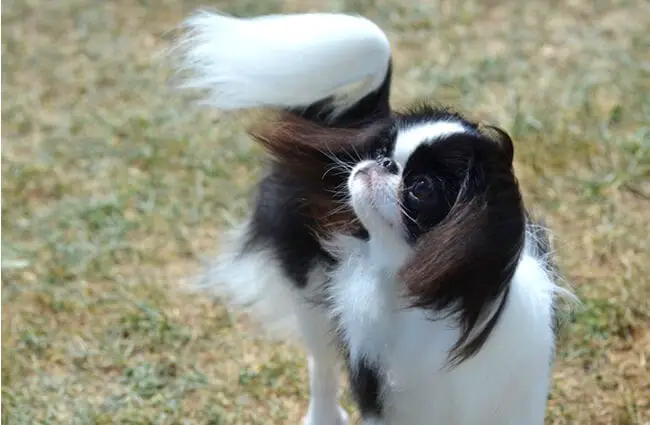
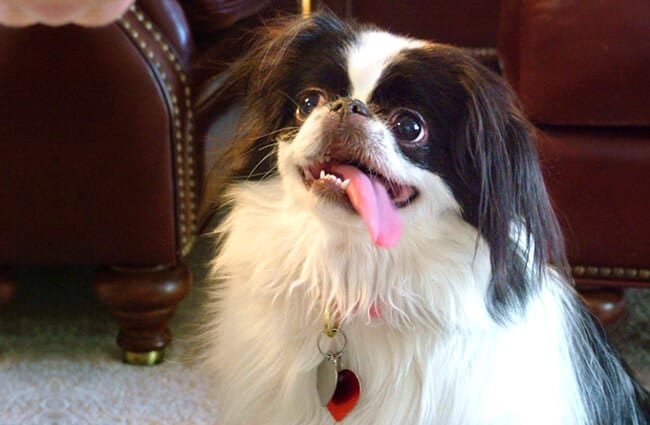
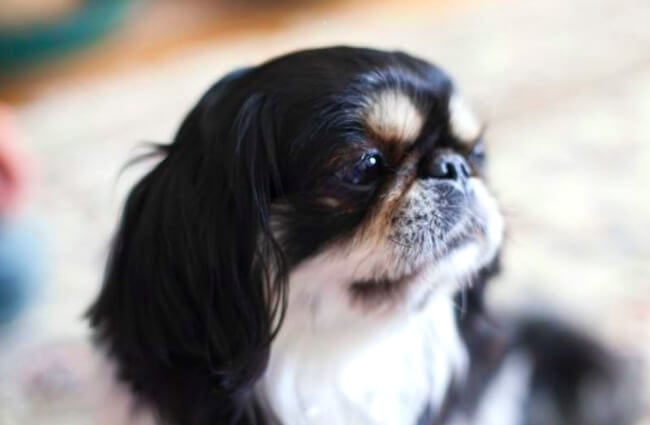
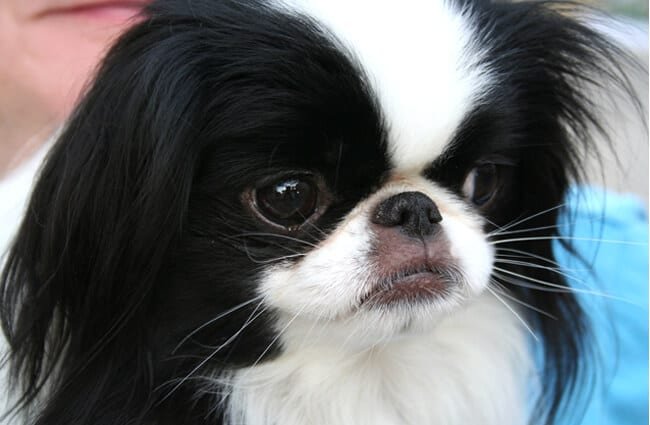
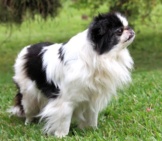

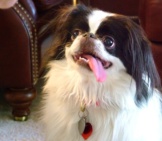
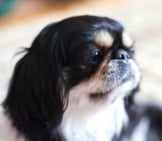


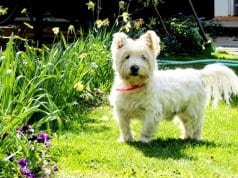

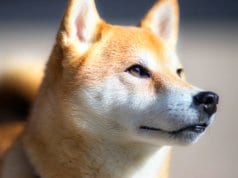

![Red Angus Closeup of a beautiful Red Angus cowPhoto by: U.S. Department of Agriculture [pubic domain]https://creativecommons.org/licenses/by/2.0/](https://animals.net/wp-content/uploads/2020/03/Red-Angus-4-100x75.jpg)

